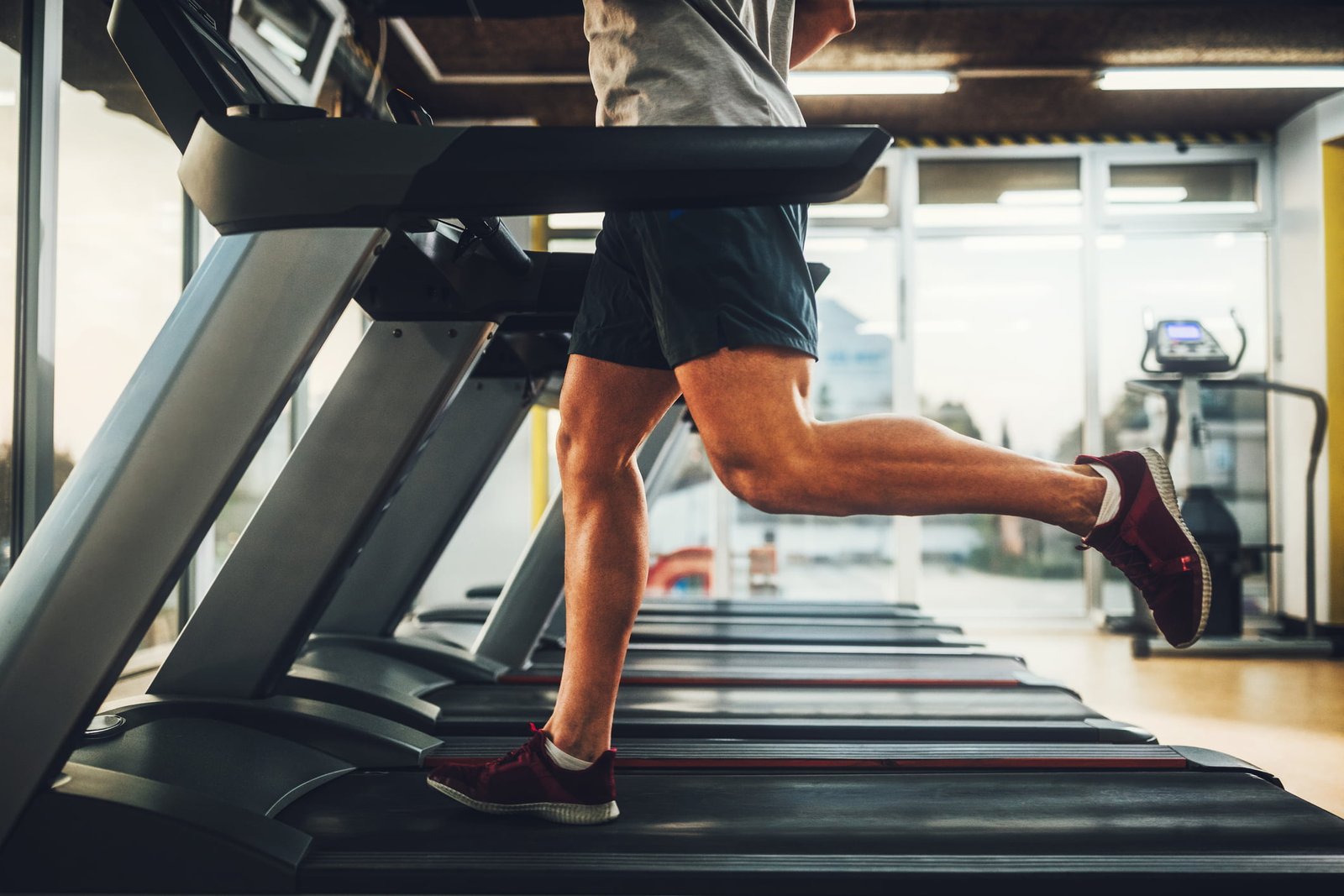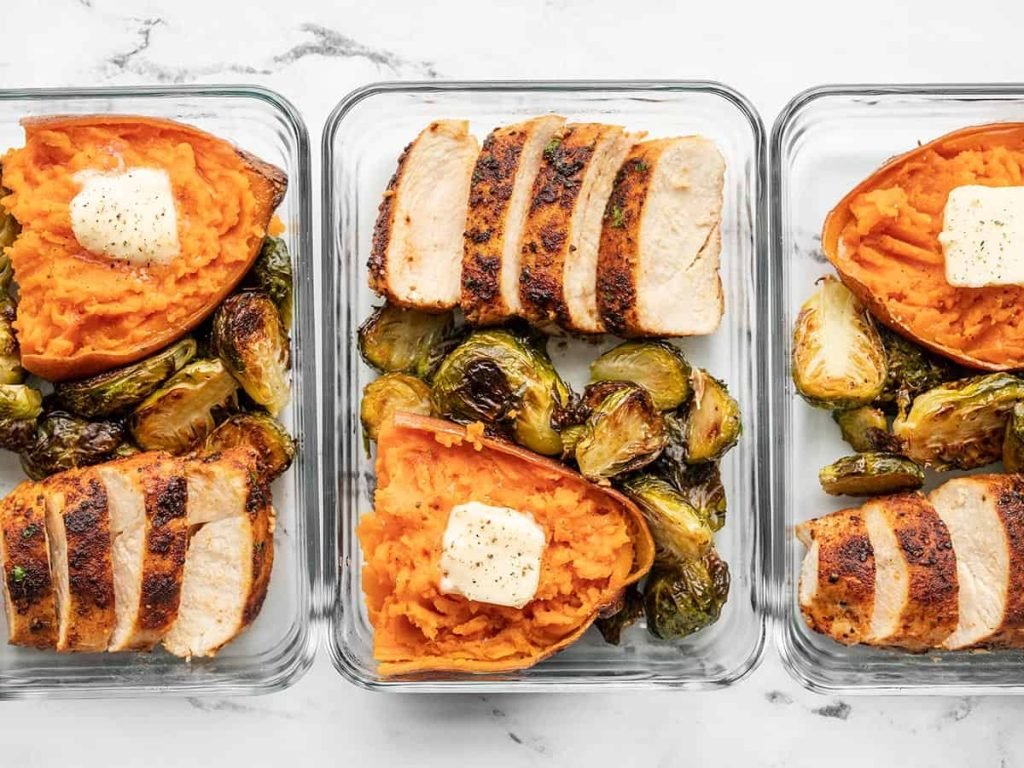Nowadays, people strive to lose weight for countless reasons, and most of them fall into the trap of fad diet which promise real results fast. While there are surely ways to accelerate your weight loss efforts, it is important to understand that shedding weight too quickly can actually backfire.
Similar to most ways of life, safe, successful and sustainable weight loss is more about the process and the journey and less about a result based destination and rapidly approaching deadline. Please read on for our expert advice on the best ways to lose weight—and keep it off.

Why Losing Weight Fast Isn’t the Best Fitness Goal
Though the temptation of the “lose 3 kg in a week” diet myth is strong, there are many reasons why accelerated shedding may actually backfire your best attempt for your weight loss. First, when people lose weight speedily, especially via crash or fad diets, they are frequently unable to maintain it because the weight they lose is often more muscle mass and water and less fat mass compared to people who lose weight gradually. Maintaining lean muscle mass is important in weight loss and fat loss because it plays a key role in metabolism. Muscle helps you burn more calories. But when you lose weight too quickly, you may lose muscle mass and your body will slows down calorie burning. Speedy weight loss can even cause permanent slowing down of metabolism. Rapid weight loss usually will lead to the unwanted yo-yo weight cycling that many chronic dieters experience. In fact, a study of former contestants on NBC’s weight loss television show “The Biggest Loser” found the more weights dropped quickly, the more the participant’s metabolism slowed down. The study also found that the contestants regained a substantial amount of their lost weight in the six years following the competition. Further compounding the issue, when people lose weight rapidly, appetite often increases as metabolism decreases, making it extremely difficult to keep the weight off. A study in Obesity reports our bodies prompt us to eat 220 calories more per day for every kilogram lost. Popular fad diets also very often result in deficiencies of nutrient. And rapid weight loss especially when you reduce carbohydrates is often largely water loss. If your daily calories are low, the body may also use muscle mass as fuel, further reducing metabolism, as muscle mass is metabolically active. The bottom line: Shedding weight sensibly is the way to go. We usually suggest a safe rate is losing around 200g to 900g a week. With that goal in mind, here are some tried-and-true ways to drop pounds and keep them off for good.

15 Proved Tips for Safe and Sustainable Weight Loss
1. Find Non-Edible Substitutes for Self-Soothing
There’s a reason it’s called “comfort food.” However, emotional eating can quickly derail all weight loss efforts.When you feel stressed, which raises cortisol levels, rather than reaching for food to feel better—since eating triggers the release of the feel-good neurotransmitter dopamine—raise levels of oxytocin, the love hormone, either by soothing touch, playing with a pet or getting a hug.Animal studies have found oxytocin reduces calories consumed and has positive effects on metabolism. A small human study also found that giving men oxytocin over an eight-week period promoted weight loss.While more research is needed to understand exactly how increasing oxytocin can impact weight and appetite, if you’re experiencing difficult emotions, a self-compassion break will allow you to give yourself the care you need so you will be less likely to eat. Remember the acronym ‘HALT,’ which stands for hungry, angry/anxious, lonely and tired. If you are physiologically hungry, eat. If you are experiencing difficult emotions, ask, ‘What do I need?’ and give yourself what you truly need. If you’re not hungry, it isn’t food.
2. Focus on the First 5% to 10%
Instead of saying, “I need to lose 11 kg,” and overwhelming yourself with what seems like an impossible goal, look toward the health benefits that can come from even modest weight loss. Set smaller, achievable targets. By losing only 5% to 10% of your total body weight (TBW) can greatly improve your health and lower your risk for illnesses, such as type 2 diabetes, stroke, cardiovascular disease and certain types of cancer.
3. Reconnect With Your Satiety Cues
Speaking of mindless eating, you can reprogram your brain for weight loss by tuning back into your body’s natural “I’m hungry” and “I’m full” cues.Dieting combined with eating on the run or while multitasking—driving, watching TV, playing with your phone—can really disconnect you from your natural signals of hunger and satiety. Plus, as children, we also learned to clean our plates rather than eat until satisfied. Add the fact that portion sizes have grown significantly—as much as 60% for things like snack foods— and the result is consistent overeating.Instead, try to eat when you’re hungry and stop when you are satisfied rather than stuffed. Instead of tracking your food, try tracking how hungry you are before, during and after meals to get back in touch with these signals.
4. Eat More Plants
Research shows a plant-based diet not only promotes weight loss, but is also easier to stick to than a low-calorie diet. Plus, it’s nutrient dense and has numerous health benefits. Produce supports weight loss because it’s rich in fiber and water, which are both calorie-free yet take up space in your stomach so you feel full. In fact, a Brazilian study found a direct correlation between increased fruit and vegetable consumption and enhanced weight loss. We suggests aiming to consume five daily servings of produce to start and working up to seven to nine servings a day. Start your day with a green smoothie, have a salad or cut up vegetables with your lunch and eat fruit for snacks and desserts. For supper, have more stir frys, incorporate veggies into your pasta dishes and stir them into soups.
5. Check in With an Accountability Partner
Sometimes losing weight can feel lonely, but you don’t have to do it all by yourself.Research shows being accountable works. In one study, two-thirds of participants who joined a weight loss program with friends maintained their weight loss for six months after the meetings ended, compared to just a quarter of those who attended on their own. Of course, many organizations also suggest having a sponsor or champion on your path to weight loss.One of the best ways to consistently eat better and shed weight steadily is to check in every day with an accountability partner. Your accountability partner doesn’t need to be your best friend, favorite co-worker or partner. Just find someone with similar weight loss goals. You don’t need to talk every day, either. Just text with each other to share that you’re eating healthy foods and staying on track. If you’re tempted by junk foods, you can lean on your partner, too. That’s when you may want to call them.
6. Drink More Water
Research shows drinking more water is associated with weight loss independent of diet and exercise. Ample water intake can help increase satiety and combat sugar cravings. Water is also necessary for lipolysis, the body’s process of burning fat for energy. We suggest following the eight by eight rule—8 ounces of water eight times throughout the day—for a minimum water intake recommendation. Our clients are usually surprised once they add this rule into their own routine by how much this simple thing can curb cravings and leave you more satiated throughout the day. Another water trick? Try drinking two cups of water before each meal. Studies have shown this simple move can increase weight loss as well.
7. Hit the Weights
Muscle burns more calories than fat. So how do you build more muscle? Strength training. Adding resistance training to your weight loss plan is a smart idea not only because of the calories you’ll burn while working out, but also because of the “afterburn effect.” Known as excess post-exercise oxygen consumption, EPOC reflects how long oxygen uptake remains elevated after exercise in order to help muscles recover. This elevation boosts metabolism both during and after strength training sessions. And the more muscle you add to your frame, the higher your resting metabolic rate (RMR). Your RMR determines how many calories your body needs to function at rest. The greater your RMR, the more you can eat and not gain weight. While cardiovascular exercise is often emphasized, strength training is key for dropping pounds and maintaining weight loss, especially after age 50 because muscle mass—which burns calories—declines at a rate of 1% to 2% per year. Strength training can slow down muscle mass decline.
8. Stand Up and Move More
One of the easiest ways to shed weight is to up your non-exercise activity thermogenesis (NEAT)—the energy expended for everything you do outside of eating, sleeping or exercising. Little changes like carrying your groceries instead of pushing a cart, parking farther away from the entrance to the mall, taking the stairs instead of the elevator or even tapping your toe can lead to hundreds of extra calories burned. Or try to stand more than you sit. Studies show that simply replacing sitting with standing leads to a greater daily energy expenditure, which directly translates into more calories burned and ultimately pounds shed. For example, if you weigh 72 kg and alternate sitting and standing, you can burn approximately 35 additional calories an hour—an extra 280 calories a day, 1,400 calories a week and about 70,000 calories a year. Set a timer on your phone, Fitbit or computer to remind you to get up and move around every hour. You’ll burn more calories and may lower your blood sugar and risk of heart disease.
9. Eat a Well-Rounded Breakfast
Breakfast skippers, listen up. If you’re trying to lose weight, skimping on morning fuel is not the way to go. In fact, studies consistently show skipping breakfast is associated with overweight and obesity. Additionally, a study in the Proceedings of the Nutrition Society found people who don’t eat breakfast tend to have poorer quality diets overall, and they skimp on nutrients, such as vitamin D, calcium and iron. But not just any breakfast will do. To think more clearly, perform more efficiently and be in better moods, you want a well-rounded, blood-sugar-balanced first meal of the day with ample protein, healthy fats and what I call quality carbs like fresh berries.
10. Don’t Go Overboard
Cutting calories too drastically or working out 24/7 may actually backfire when it comes to weight loss. Most people think shedding weights requires draconian measures to get results, but allowing yourself adequate recovery time is more productive. Many people, when they get frustrated that they haven’t lost weight, will double down on the stressor (i.e. catabolic phase) that they are doing. For example, they’ll run extra miles, double up on the amount of time they spend at the gym and/or eat less food. However, all of the results we desire from doing the above things actually occur during the anabolic recovery phase. During the anabolic phase, the body builds muscle mass and loses fat mass while recovering from the stressor. So, instead of pushing yourself to a breaking point, which ends up leading to overtraining and diminished results, put as much energy into rest and nutrition as you do into workouts. “To create sustainable results, try to balance your ratio of stress to recovery.
11. Pump Up Your Protein
Increasing your protein consumption can help reduce appetite and help prevent the loss of muscle mass. Eating around 25 to 30 grams of protein—two scoops of protein powder or 4 ounces of chicken breast—per meal can improve appetite control and manage your body weight. The best way to do it is to make sure you have one serving of high-quality protein per meal. Women older than 50 need significantly more protein (1 to 1.5 grams per kilogram of body weight daily) than men and younger women (who require .8 grams of protein per kilogram of body weight daily). Women need more protein after 50, especially as they approach menopause, because decreases in the hormone estrogen result in a loss of skeletal muscle mass, strength and regenerative capacity.
12. Watch Less Television
Couch surfers wanting to lose weight should turn off the TV—in fact, the more television people watch, the more weight they gain. One study that collected data from more than 50,000 middle-aged women over six years found that for every two hours the participants spent watching television each day, they had a 23% higher risk of obesity and a 14% higher risk of developing diabetes. Excess television watching is correlated with extra pounds primarily because it’s a sedentary activity that often also leads to mindless eating. So, turn it off or maybe change the channel to an exercise program instead.
13. Reduce Your Intake of Ultra-Processed Carbs and Sweets
A study in the Journal of the American Medical Association reveals what you eat is most important for weight loss. The pounds will come off more quickly if you improve the quality of the foods you ingest. One of the healthiest ways to shed weight is to reduce your intake of sugar and rapidly metabolized carbohydrates. In particular, you want to cut out or drastically curtail your intake of high-glycemic-load foods, such as sugary snacks, processed carbs and soft drinks. When you avoid or cut back on French fries, chips, crackers and the like, you’ll speed up your weight loss.
14. Get More Sleep
Getting a good night’s sleep is one of the best things you can do to maintain a healthy weight and overall health. Studies show that poor sleep is associated with weight gain and other health disorders. When researchers analyzed 16 years’ worth of data on 68,183 middle-aged American women, they found those who slept no more than five hours per night were 15% more likely to have obesity compared to those who slept seven hours a night. Insufficient sleep may also affect the production of appetite-regulating hormones ghrelin and leptin, which can lead people to feel hungrier throughout the day. Additionally, poor sleep increases cortisol and can result in harder-to-lose body and belly fat. Most of us can’t control what time we have to get up, but we can control when we go to bed, so counting back seven to nine hours from the time you have to wake up is a great tip. We also encourage the 3-2-1 rule, which means stop working three hours before bed, stop eating two hours before bed and stop digital stimuli one hour before bed to improve your deep sleep and REM.
15. Implement Long-Term Lifestyle and Behavior Changes
When trying to lose weight, ban the word “diet”. Dieting can be unpleasant and make you hungry, so you constantly think about food, which is exactly what you don’t want when trying to lose weight. Instead, we recommends thinking of weight loss as a part of getting healthier and concentrating on taking care of your body first. Weight loss is complicated and you don’t have total control over the number on the scale, but you do have control over what you eat, how much you move and other factors that impact weight, such as stress and sleep. We suggests setting SMART—specific, measurable, achievable, relevant and time-sensitive—goals and rewarding yourself when you hit them.
Our personal training allows you to meet your lifestyle needs and is flexible to fit into your busy schedule. Feel free to contact us for details.
- Reverse Lunges: Benefits and Techniques - April 1, 2024
- Enhance Your Life – Elevate Your Cardiovascular Fitness Today - March 18, 2024
- Achieving Cellular Youthfulness: How Lifestyle Modifications Can Lengthen Telomeres - March 12, 2024

5 Responses